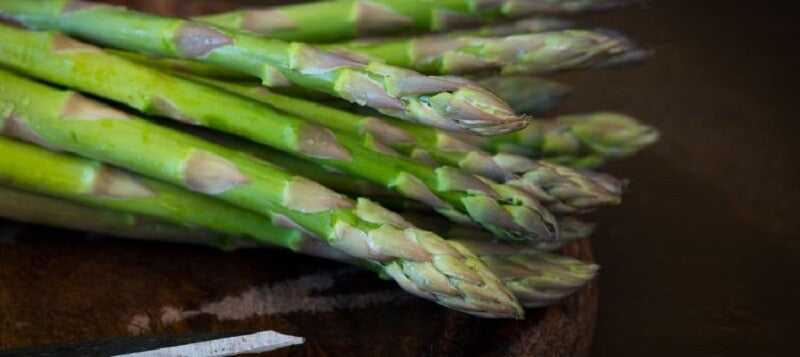How asparagus came to Europe - a short history of an exclusive perennial
Julius Caesar may have drawn up plans to conquer Europe while eating asparagus, Confucius pondered humanity, and Plato wrote his dialogues. Asparagus has been a sought-after delicacy since time immemorial. The oldest known records date back 5,000 years. Asparagus was immortalized on Egyptian sarcophagi for centuries.
Former aphrodisiac
Asparagus as an aphrodisiac. Ancient civilizations valued this perennial plant for its symbolic value. For the ancient Romans, the phallic shape of asparagus was clearly associated with masculinity. The stimulating asparagus even inspired the then Emperor Octavian Augustus, who used to say, "Do it before the asparagus is cooked." Nevertheless, asparagus was admired by Cato the Elder, a censor in the ancient Roman Empire. In his work "De Agri Cultura," or "About the Farm," he proves that asparagus, along with cabbage, is the most suitable plant worth growing. Another, by Pw. Apennine Since Roman times, the writer and poet Pliny the Elder revered asparagus in his works, pointing out that the best asparagus should be so thick that three asparagus would weigh half a kilo. The Roman politician Lucullus, on the other hand, famous for his lavish feasts, had asparagus with oysters on his daily menu.
A popular recipe in the Roman Empire was cooked asparagus with melted butter, seasoned with pepper and salt, and a squeeze of lemon—a plant that likely came to present-day Italy from the foothills of the Himalayas. In the northern corners of Europe, the Gauls respected asparagus's healing properties and attributed to it the ability to treat liver diseases.
Medieval powers enjoyed asparagus
Perennial plants only reached the northern European powers in the Middle Ages. Although there are occasional references to asparagus being known earlier, these were isolated locations. During the Middle Ages, asparagus became increasingly popular, especially in England, Germany, and France. They were very often cultivated in monasteries. However, during the Renaissance, they were increasingly found on elite tables and became one of the most popular plants. Their popularity was so great that they even found their way onto the canvases of famous painters, such as the Flemish animal researcher Frans Snyders.
THE PUBLISHER'S CHOICE
Almonds 1 kg BIOGO
- €11,69
€13,75- €11,69
- Unit price
- / per
Walnuts 800 g BIOGO
- €8,65
€10,18- €8,65
- Unit price
- / per
Dried organic mango 400 g BIOGO
- €10,99
- €10,99
- Unit price
- / per
Dried White Mulberries 500 g ORGANIC
- €5,84
€6,87- €5,84
- Unit price
- / per
Dried organic figs 800 g BIOGO
- €30,12
- €30,12
- Unit price
- / per
Unpeeled buckwheat groats 1 kg BIOGO
- €2,81
€3,31- €2,81
- Unit price
- / per
Organic coconut flakes 500 g BIOGO
- €10,07
- €10,07
- Unit price
- / per
Organic oat flakes 600 g BIOGO
- €3,77
- €3,77
- Unit price
- / per
Organic cashew nuts 1 kg BIOGO
- €19,99
- €19,99
- Unit price
- / per
Milk thistle seeds 1 kg BIOGO
- €3,99
- €3,99
- Unit price
- / per









































































































































